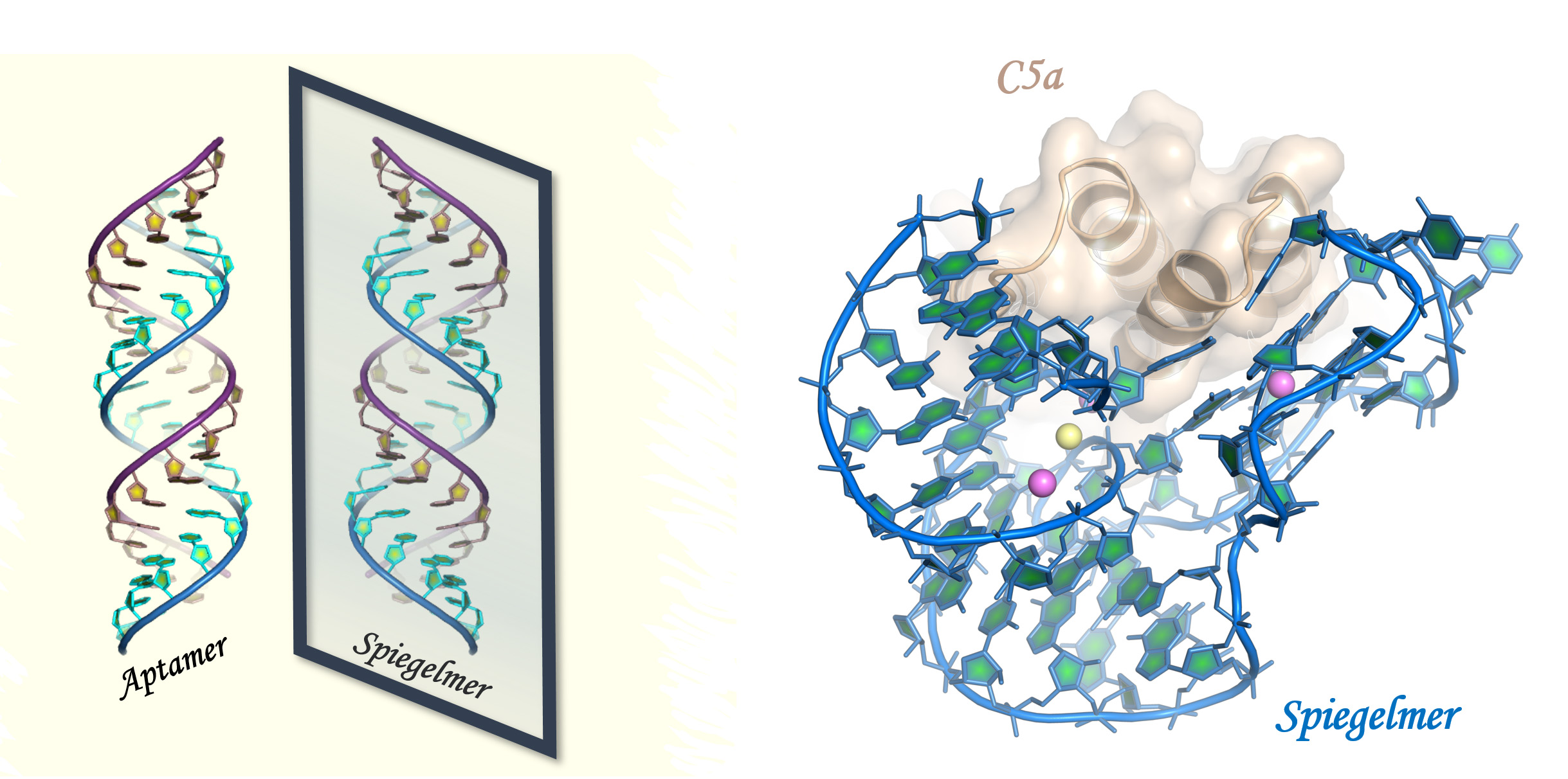Aarhus scientists look through the mirror to reveal the secrets of a new drug
Research results from Aarhus University can help develop anti-inflammatory drugs.

Two objects that are the mirror-image of each other are perfectly identical objects except for their reversed geometry and, as a consequence, one can expect that they will function equally well. Nature offers many examples of objects that are mirror-images of each other and work identically. The human body is one of the best examples. Both our right foot and our left foot allow us to walk steadily. We can hear as distinctively with our left ear as with our right ear. We can smell as sensitively from our left nostril as from our right nostril.
However, when it comes to the minimal building blocks of the human body, nature has chosen only one side of the mirror. The nucleotides and amino acids which form the building blocks for the molecules' driving life in our body – namely DNA, RNA and proteins – correspond to only one of the two possible mirror-images. Why nature chose only one side of the mirror remains a mystery. But on a more metaphysical note, one can easily wonder whether the other side of the mirror would have worked equally well. Even more intriguingly would be to know whether molecules from the two sides of the mirror could have coexisted in living organisms and worked in concert.
These questions do not only interest philosophers. Since the molecular machinery of life only relies on one mirror form, scientists have tried to use the other mirror form to trick the human body for the treatment of diseases. Therapeutic molecules with the non-natural mirror form can perform their healing task in our body while remaining undetected by our immune system. Such an ingenious strategy has been best exemplified by the development of a new class of so-called oligonucleotide aptamers by the German biotech company NOXXON Pharma AG in Berlin. In contrast to standard aptamers that are built with D-nucleotides – the naturally available nucleotides that are used to build our DNA and RNA molecules – the NOXXON aptamers are built with non-natural L-nucleotides that are mirror-images of the natural D-nucleotides. These aptamers are termed “Spiegelmers” from the German word “Spiegel” which means mirror.
Standard aptamers are degraded rapidly by enzymes in our body, which limit their use as efficient therapeutics, and they are recognised as a danger signal by the human immune system. On the contrary, due to their mirror-image geometry which is not recognised by DNA/RNA degrading enzymes, Spiegelmers can escape degradation and detection by our immune system. They have therefore a much more prolonged life in the human body – which renders them very valuable molecules for the treatment of diseases.
One of the Spiegelmers developed by NOXXON neutralises an alarm protein called C5a released during the activation of our innate immune system when an infection by pathogens is detected. C5a is a potent molecule that initiates inflammation, helping our body to fight infection. However, if too much C5a is produced, it can lead to severe inflammatory diseases, and neutralising C5a with specific drugs may therefore help treating these diseases.
In collaboration with a team led by Dr. Axel Vater from NOXXON, Dr. Laure Yatime and Prof. Gregers Rom Andersen from the Department of Molecular Biology and Genetics at Aarhus University in Denmark have managed for the very first time to reveal the three-dimensional structure of a Spiegelmer in complex with its pharmacological target, the C5a protein. By exposing crystals of the Spiegelmer bound to C5a to X-rays, the scientists could determine the atomic structure of the two molecules bound to each other. The new results have allowed the researchers to understand how the Spiegelmer prevents the binding of C5a to its receptor present on human cells, thereby dampening inflammation. These new results have now been published in the scientific journal Nature Communications.
“Obtaining this 3D-structure was quite a technical challenge,” explains scientist Laure Yatime, and continues, “The computer programmes used by us to analyse the structure of nucleic acids are constructed for the normal building blocks, the D-nucleotides. These programmes therefore had to be taught how to deal with the Spiegelmer built from their mirror-images, the L-nucleotides”.
Nevertheless, the scientists succeeded, and their results revealed a nucleic acid molecule that has the perfectly reversed geometry as compared to a naturally occurring RNA/DNA molecule. However, this unusual molecule still interacts strongly with the normal C5a protein built with naturally occurring amino acids, thereby illustrating beautifully how the two sides of the mirror can be reunited and leaving us to wonder about the possibility of a world where both sides of the mirror would have coexisted in harmony.
Link to the scientific article published in Nature Communications:
L. Yatime, C. Maasch, K. Hoehlig,S. Klussmann,G.R. Andersen & A. Vater A. (2015) Nature Communications. Structural basis for the targeting of complement anaphylatoxin C5a using a mixed L-RNA/L-DNA aptamer.
http://www.nature.com/ncomms/2015/150422/ncomms7481/full/ncomms7481.html
More information
Senior Researcher Laure Yatime
lay@inano.au.dk - +45 8715 5552
Professor Gregers Rom Andersen
gra@mbg.au.dk - +45 5144 6530
Department of Molecular Biology and Genetics
Aarhus University
Denmark
